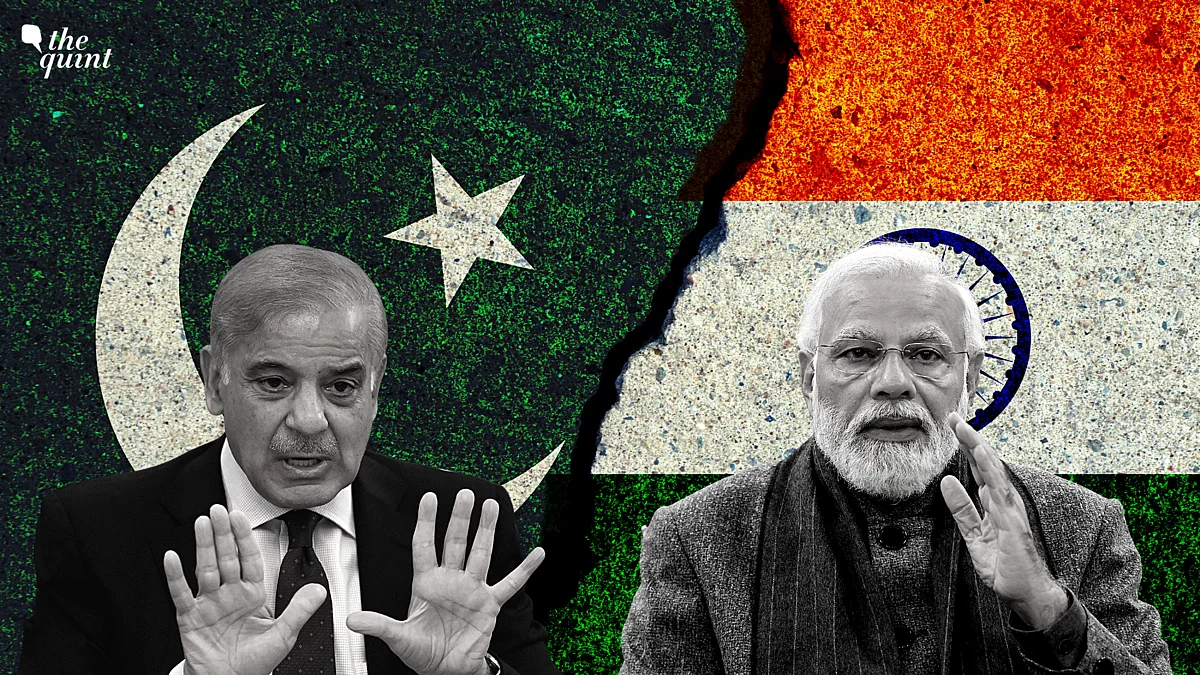Pakistan’s Prime Minister Shehbaz Sharif has issued a bold call for renewed peace negotiations with India, explicitly placing the contentious Kashmir issue on the table, in a bid to thaw decades of frosty relations between the nuclear-armed neighbors. The proposal marks a significant diplomatic overture amid shifting regional dynamics. Below, we explore the context of Sharif’s appeal, the stakes involved, and the broader implications as reported during this period.
A Plea for Dialogue
In a televised address from Islamabad, Sharif urged India to resume talks, emphasizing that “war is not an option” and that both nations must address their disputes—chiefly the Kashmir conflict—for the sake of 1.7 billion people across South Asia. “Let us sit down and talk peace, including the core issue of Jammu and Kashmir,” he declared, framing it as a chance to unlock economic prosperity and regional stability. The call follows a congratulatory message to India’s Narendra Modi on his 74th birthday, signaling a personal outreach after years of strained ties.
Sharif’s proposal comes as his coalition government, fragile since ousting Imran Khan in 2022, seeks a unifying cause. He tied peace to practical gains—trade, energy cooperation, and poverty alleviation—pitching it as a “win-win” for both nations, locked in rivalry since their 1947 partition. The Kashmir issue, a flashpoint fueling three wars and countless skirmishes, remains the crux, with Pakistan demanding a resolution aligned with UN resolutions for a plebiscite—India insists it’s an internal matter.
Why Now?
The timing blends pragmatism and pressure. Pakistan reels from economic woes—$126 billion in debt, 40% inflation—needing regional trade to offset reliance on IMF bailouts, like the $7 billion secured last year. India’s $3.9 trillion economy, growing at 7%, offers a lifeline if borders reopen; Sharif cited past trade peaks of $2.7 billion annually before 2019’s Pulwama attack froze ties. China’s nudging, as Pakistan’s $60 billion CPEC partner, may also push this thaw—Beijing favors stability for its Belt and Road ambitions.
Regionally, India’s Modi, post-election setbacks, pivots to legacy-building, while Pakistan’s military, a power broker, signals restraint after 2023’s ceasefire renewal along the Line of Control (LoC). Global eyes—U.S., Russia, UN—watch, with Trump’s incoming administration possibly favoring de-escalation to focus on China. Yet, India’s silence looms large; Modi’s government, hardened by Kashmir’s 2019 status change, may balk at talks absent terror concessions.
Stakes Across the Border
Pakistan’s gambit hinges on Kashmir, split since 1947—India holds 55%, Pakistan 30%, China 15%. Sharif seeks a UN-backed vote, a nonstarter for New Delhi, which revoked Jammu and Kashmir’s autonomy, sparking Pakistani fury but domestic cheers. The LoC, quieter since 2021, still simmers—India blames Pakistan-based militants like Jaish-e-Mohammed; Sharif counters with “state terrorism” charges against India’s troop-heavy presence.
Economically, peace could revive the SAARC bloc—stagnant since 2016—and link India’s markets to Central Asia via Pakistan. Militarily, it eases nuclear brinkmanship—both nations boast 160 warheads each—though trust remains razor-thin after 1999’s Kargil clash and 2008’s Mumbai attacks. Publicly, Pakistan’s youth clamor for jobs over jihad; India’s weigh nationalism against trade.
Regional and Global Echoes
Neighbors brace for impact. Afghanistan, under Taliban rule, eyes Pakistan’s focus shifting east, while Iran, a Sharif ally, backs talks to counter India’s Chabahar port play. China, hosting G20 summits, nudges both to stabilize its $62 billion corridor—oil holds at $74 per barrel, but trade routes quiver. The U.S., juggling Iraq’s grid link and Russia’s Arctic push, sees a calmer South Asia as a buffer against Beijing’s sway.
India’s reticence is the wildcard. Foreign Minister S Jaishankar, cool to past overtures, demands terror curbs—Pakistan’s arrest of 12 Lashkar-e-Taiba men last year falls short. Modi’s silence post-Sharif’s call hints at skepticism, with elections looming and Kashmir a vote-winner. The UN, sidelined since 1949 resolutions, offers faint mediation hope.
Challenges and Hopes
Sharif’s olive branch faces steep odds. Domestic hawks—Pakistan’s military, India’s BJP base—bristle at compromise; Kashmir’s 13 million, split by barbed wire, yearn for peace but distrust both capitals. Confidence-building—like 2015’s Modi-Lahore visit—could restart cricket ties or trade, yet terror ghosts haunt every step. Climate stakes loom too—shared Indus waters, vital for 300 million, need joint stewardship as glaciers shrink.
Success hinges on small wins: visa easing, border markets, or LoC calm. Failure risks more of the same—proxy wars, missile tests, and a region on edge.
Looking Ahead
Sharif’s peace call tests South Asia’s fault lines. A breakthrough could heal a 77-year wound, boosting trade and cooling nuclear fears; a rebuff could deepen the freeze, with Kashmir’s unrest simmering on. Pakistan pushes, India ponders, and the world watches—will dialogue triumph, or will history’s weight bury this fleeting chance? For now, Sharif’s words echo across the LoC, a fragile hope in a land long scarred by strife.
